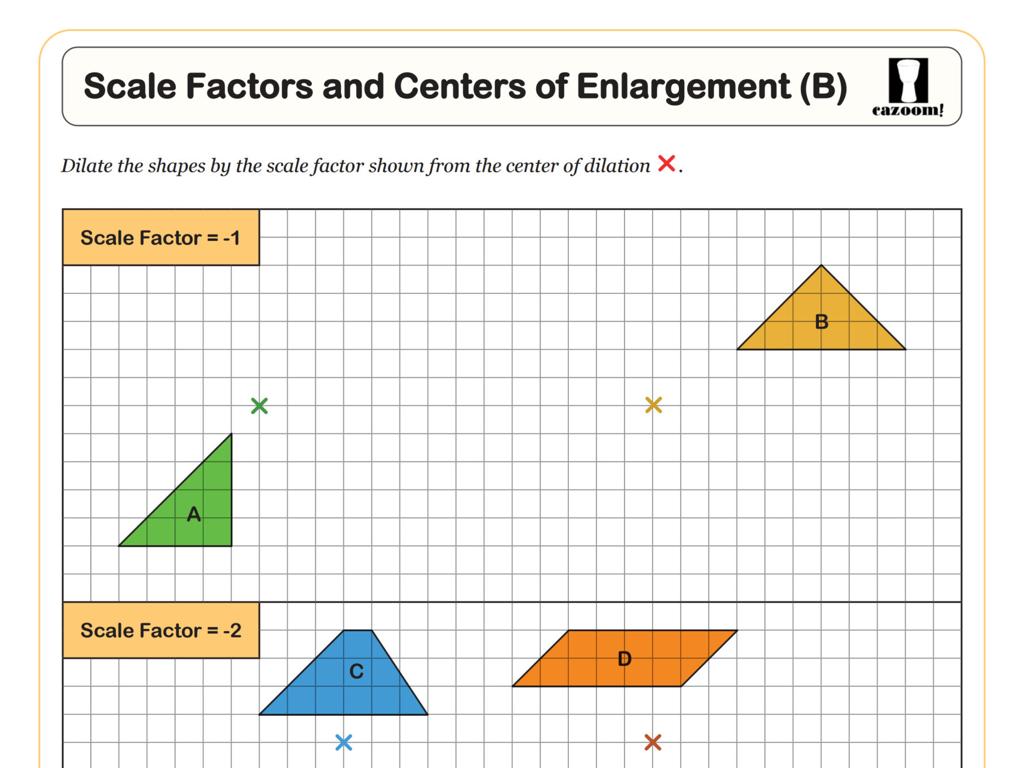Calculate Time From Speed And Distance
Subject: Science
Grade: Sixth grade
Topic: Velocity, Acceleration, And Forces
Please LOG IN to download the presentation. Access is available to registered users only.
View More Content
Calculating Time from Speed and Distance
– Understanding motion concepts
– Motion involves velocity (speed with direction) and acceleration (change in velocity).
– Relationship of speed, distance, time
– Speed is how fast an object moves; distance is how far it goes; time is how long it takes.
– Formula to calculate time
– Time (t) can be found using the formula: t = distance (d) / speed (s).
– Applying formula in real-life scenarios
– Example: If a car travels 150 miles at 50 mph, time taken is 150/50 = 3 hours.
|
This slide introduces students to the fundamental concepts of motion, specifically velocity and acceleration, and how they relate to speed, distance, and time. The goal is to equip students with the knowledge to calculate the time it takes for an object to travel a certain distance at a given speed. Emphasize the importance of understanding these concepts not just theoretically, but also their practical applications in everyday life, such as determining travel times. Encourage students to think of examples where they might need to calculate time based on speed and distance, and prepare them for activities where they will apply the formula t = d/s to solve real-world problems.
Understanding Velocity
– Velocity: Speed with direction
– Example: Car going north at 60 mph
– A car’s northward journey at a constant 60 mph
– Velocity combines speed and direction
– Importance in motion analysis
– Knowing velocity helps predict future positions
|
This slide introduces the concept of velocity, which is a fundamental aspect of motion in physics. Velocity is not just speed, but speed in a specific direction. For example, if a car is traveling north at 60 miles per hour, its velocity is 60 mph north. Unlike speed, which is scalar, velocity is a vector quantity because it includes both magnitude (speed) and direction. Understanding velocity is crucial for analyzing and predicting the future position of moving objects. It’s important for students to grasp that velocity can change even if the speed remains constant, simply by changing the direction of motion. Encourage students to think of real-life scenarios where knowing the velocity would be important, such as in navigation or sports.
Calculating Time from Speed and Distance
– Understanding speed
– Speed indicates how quickly an object moves.
– Grasping distance
– Distance covers the total path traveled.
– Units of speed
– Common units: mph for cars, m/s for science experiments.
– Formula for time
– Time = Distance ÷ Speed. Use to calculate travel time.
|
This slide introduces the basic concepts needed to calculate time from speed and distance. Speed is the measure of how fast an object is moving, which can be thought of as the rate at which an object covers distance. Distance is the total path an object travels. Speed is commonly measured in miles per hour (mph) or meters per second (m/s), depending on the context. To find the time it takes for an object to travel a certain distance at a constant speed, we use the formula: Time = Distance ÷ Speed. Provide examples such as ‘If a car travels 60 miles at a speed of 30 mph, how long does it take to reach its destination?’ to help students understand the concept.
Calculating Time from Speed and Distance
– Time calculation formula
– Time = Distance / Speed, a simple division
– Required values: Distance & Speed
– Computing Time with examples
– Example: Distance of 100 miles at 50 mph takes 2 hours
– Practice problems
– We’ll solve problems to understand better
|
This slide introduces the basic formula for calculating time when speed and distance are known. Emphasize the simplicity of the formula and ensure students understand the units of measurement for speed (miles per hour, kilometers per hour, etc.) and distance (miles, kilometers, etc.). Use real-world examples, such as travel scenarios, to illustrate the concept. After explaining with examples, provide students with practice problems to solve as a class or in groups, reinforcing the concept and allowing them to apply the formula. Encourage students to ask questions if they’re unsure about the process.
Calculating Time from Speed and Distance
– Understanding the formula
– Example: Train journey calculation
– Train covers 150 miles at 50 mph
– Solving for time
– Time = Distance / Speed
– Applying the formula
– Time = 150 miles / 50 mph = 3 hours
|
This slide introduces the concept of calculating time using the formula Time = Distance / Speed. Start by explaining the formula and its components: time is what we’re solving for, distance is the total length of the journey, and speed is how fast the train is going. Use the train example to show a practical application of the formula. Have students calculate the time it takes for the train to travel 150 miles at a speed of 50 mph. Emphasize that by dividing the distance by the speed, they can find the time it takes for any journey. Encourage students to practice with different distances and speeds to solidify their understanding.
Calculating Time from Speed and Distance
– Understanding the formula
– Time = Distance / Speed is used to find how long it takes to travel.
– Solving problems together
– We’ll go through examples as a class to demonstrate.
– Pair up for practice
– Work with a classmate to solve problems.
– Apply formula to scenarios
– Use real-life scenarios to calculate travel time.
|
This slide is designed to engage students in applying the formula Time = Distance / Speed to calculate travel time. Start by explaining the formula and its components. Then, as a class, solve a couple of example problems to demonstrate the process. Next, have students pair up and work through a set of practice problems, using scenarios that are relevant and understandable for their age group. Encourage collaboration and discussion between partners to foster a deeper understanding. As a teacher, circulate the room to provide guidance and ensure that each pair is applying the formula correctly. This activity will help solidify the concept of calculating time using speed and distance in a practical, hands-on way.
Understanding Acceleration
– Acceleration: velocity’s rate of change
– Acceleration includes speeding up or slowing down
– For example, a car going faster or a bike coming to a stop
– Acceleration also involves changing direction
– Like a runner taking a turn on a track
– Measured in meters per second squared (m/s²)
– This unit shows how quickly speed changes per second
|
Acceleration is a fundamental concept in understanding motion. It’s not just about how fast something is moving, but how quickly that speed is changing. When teaching this concept, emphasize that acceleration can occur in three different ways: an object can speed up, slow down, or change direction. Use everyday examples, such as cars braking or accelerating, or athletes running on a track, to illustrate these points. Make sure to explain the unit of measurement for acceleration, meters per second squared, and how it quantifies the change in velocity over time. This will lay the groundwork for later discussions on how to calculate time from speed and distance.
Class Activity: Race Against Time
– Measure toy car speed in groups
– Record distance and time taken
– Apply speed formula
– Use formula: Time = Distance ÷ Speed
– Compare calculations with results
– Does the calculated time match the experiment time?
|
This interactive group activity is designed to help students understand the relationship between speed, distance, and time. Provide each group with a toy car, a measuring tape, and a stopwatch. Students will measure how far the car travels and the time it takes. They will then use the formula Time = Distance ÷ Speed to calculate the time and compare it with their recorded time to see if they match. This hands-on experience reinforces the concept that time can be calculated when speed and distance are known. Possible variations for different groups could include using cars of different weights, using different surfaces, or inclining the surface to introduce the concept of acceleration.
Conclusion: Time, Speed, and Distance
– Recap: Time calculation formula
– Time = Distance ÷ Speed. Use it to solve problems.
– Understanding velocity’s role
– Velocity includes speed and direction. It’s crucial for predicting motion.
– Acceleration’s significance
– Acceleration is how fast velocity changes. It’s vital for understanding movement.
– Up next: Exploring Forces
|
As we wrap up today’s lesson, review the formula for calculating time from speed and distance, emphasizing its application in real-world scenarios. Highlight the importance of understanding velocity not just speed but also the direction of motion and acceleration, which is the rate at which velocity changes. These concepts are foundational for students as they prepare to delve into the topic of forces in the next class. Encourage students to think of examples where they’ve seen velocity and acceleration in action, such as in sports or driving. This will help solidify their understanding and make the transition to learning about forces smoother.






